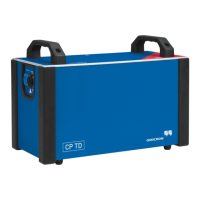97
Capacitance and DF Measurement on High-Voltage Bushings
Note: Large variations in temperature significantly affect dissipation factor
readings on certain types of bushings. For comparative purposes, readings
should be taken at the same temperature. Corrections should be applied before
comparing readings taken at different temperatures.
Bushings may be tested by one or more of four different methods, depending
upon the type of bushing and the dissipation factor test set available. For more
detailed instructions on this test procedure, see the dissipation factor test set
instruction book from the appropriate manufacturer. The four test methods are
described as follows:
7.5 Ungrounded Specimen Test (UST)
This test measures the insulation between the center conductor and the
capacitance tap, the dissipation factor tap, and/or ungrounded flange of a
bushing. This test may be applied to any bushing in or out of the apparatus that
is either equipped with capacitance or dissipation factor taps, or with the flange
that can be isolated from the grounded tank in which the bushing is installed. The
insulation resistance between the taps or insulated flanges and ground should
be 0.5 M or greater. While in this case anything that is attached to the bushing
would also be energized, only the insulation of the bushing between the center
conductor and the ungrounded tap or flange would be measured. In the case of
bushings equipped with capacitance taps, a supplementary test should always

